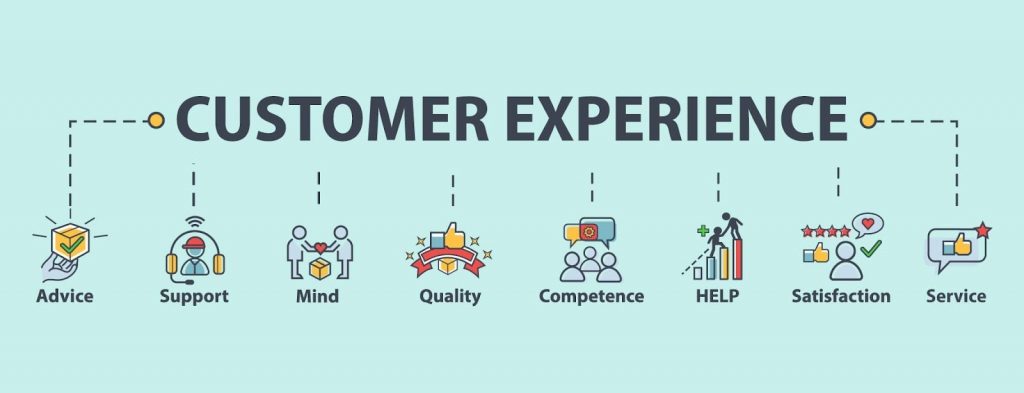With the rapid state at which the world is turning from one trend to the next and from one technology to another, more often than not we find ourselves at crossroads. Notably, this crossroad has nothing to do with the size and type of our business.
Instead, it is all about the speed at which we evolve along with the increasingly digital world.

Digital adoption lies at the heart of this evolution. After all, the adoption of digital tools and means as part of the day-to-day operations of commercial activity is a surefire way of making certain that your trade grows in step with the marketplace.
While there are many benefits that a business can reap through digital adoption, the reasons for implementing the same can be different for each company. Let us take a look at the various factors that make this step a necessity for numerous small- and medium-sized enterprises.
Need For Digital Adoption For SMEs
While there could be several advantages and motives behind the adoption of new technology by SMEs around the globe, some general benefits that are enjoyed by all users irrespective of the kind of industry include the following.
Read: 10 Ways Branding is Important for Small Businesses
Saves Time and Effort
Keeping a check on inventory and regular bookkeeping as well as maintaining a detailed list of customers with their regular follow-ups and feedback — these are some of the most basic functions of any business, regardless of the industry you belong to.
And I’m sure you can understand — if even talking about them is enough to tire you out — when these activities are carried out manually, the time, effort, and manpower spent on the tasks increase multifold.
In such a case, by moving to a digital platform, you not only save the time and effort of your employees, but you may even be able to work more efficiently with a smaller workforce. Thus by saving the money that would have been spent on keeping more employees on your payroll, any funds dispensed towards adopting digitalization essentially pay for themselves.
Allows Team Collaboration on Projects
With the changing times, every problem now has a digital solution. Be it something as simple as shopping for groceries or something as complex as collaborating with the entire team on full-fledged projects. Digital adoption not only enables each team member to share their work and get feedback with relative ease but also gives everyone the opportunity to work together effectively even if they’re working remotely.
Tasks can be completed and ideas can be discussed in real-time and the process of coming together to work jointly on projects becomes much simpler with the optimal use of digital tools.
Helps Monitor Work Progress
As mentioned above, being able to oversee the work that your employees are doing is valuable. In a traditional setting where all work is done manually with tons of paperwork first done by hand and then uploaded on the company server for safekeeping — keeping a check on the work done and its quality is by no means an easy task. However, through the transparency that a DAP provides, you can quite easily monitor their work status on any given project.
Tracking the progress of a worker is of utmost importance as this also helps you find out how well employees are performing, at what points they are lacking, where they could use technical help, or where they could benefit from some additional training.
Improving Customer Experience
Customer experience is one of the top priorities of most marketers today seeing as it is the whole and sole of why a producer would manufacture and sell something. It essentially means taking care that each of your customers is happy and satisfied with your brand.

While businesses and trade activities have been around for centuries, the digital era is pretty new. And so is improving the experience with the brand through prompt digital customer service. By adopting digital applications that automate a good chunk of customer service, you can shift your efforts from the repetitive aspects of customer service to other important and core activities of growing your business.
Admittedly, there are many more reasons that corroborate the fact that digital adoption is a necessity as opposed to a luxury. But, these are some key points to be remembered.
Now before we move on to the strategies to improve the level of digital adoption, let’s also take a quick glance at the difficulties you may face in a successful and effective digitalization.
Challenges To Digital Adoption In SMEs
As we discussed before, every new invention, discovery, technique, or technology comes alongside its own pros and cons. Some vital challenges to tackle as and when you face them during your digital adoption are listed below.
Investment Needs
For any kind of technological upgrade in a business setup, you need to invest money upfront. For instance, be it changing the look and feel of your eCommerce store, using a new team messaging tool, or making the much needed and much-awaited move to a digital platform. Each demands its own funding to make sure that the best results are achieved owing to the top tools used.
Furthermore, these changes often require a substantial investment before they start yielding any returns. Since the kind of money needed to update your workplace from a traditional one to a digital-first one is quite high, organizations frequently overlook the need to go digital to save some bucks in the short run. However, in the longer run, this investment saves more time, money, and effort than continuing to rely on traditional means. As a matter of fact, it usually ends up paying for itself by saving a lot more funds that would have otherwise been spent on manual labor.
Recruitment of Skilled Employees
When a small or medium-sized business enterprise agrees to go digital, it needs not just the technological upgrade but also equally skilled employees to leverage the tech to its fullest. Once again, similar to the above challenge, this also entails a substantial monetary investment that goes into building the new workforce.
The process of finding and employing skilled workers is also by no means an easy feat. Finding the best employees for your firm with good technical background is crucial when hiring new staff.
On the contrary, you can also choose to train your existing staff by organizing regular workshops and seminars conducted under the supervision of an expert. Although this also requires a lump sum amount to be put in, the total in this scenario will be much lower than that accrued while recruiting new personnel.
Resistance to Change
It is said that with age, the ability and willingness to change and mold oneself decreases. This can be seen in action amongst the employees of a company who are newly being introduced to a much different working style than what they are used to.
It is crucial for any SME business owner to begin the process of digitization by adopting digital changes in their own work first. This helps understand the ground realities of any software and thus, in turn, reduces the resistance to change amidst the workers. Many tools and software out there offer trial periods for this very reason, so that before making a monetary commitment with them, you can use its functions and determine if it is suitable to your organizational needs.
Said trial period also helps the owner understand to what level of technical knowledge is necessary to work on the same and how much training would thus be required by the existing workforce to optimally utilize the application.
Moving forward, let us finally discuss some of the ways that can help you improve the process of digital adoption, especially if you are a small- or middle-sized business.
Ways To Improve Digital Adoption In Your SME
There are numerous means through which you can improve the overall process as well as the effectiveness of digital adoption in your SME, some of the top ones being listed below.
Let us have a look.
#1. Providing Proper Training Beforehand
Training is an immensely essential part of beginning any new journey. After all, be it a sport that you’re trying your hand at for the first time, or complex software — if you know what you’re supposed to do, the chances of you emerging the victor are higher.
For this very reason, it is important that you introduce complex digital tools with integrated walkthroughs and learning guides to ensure employees learn the software to its fullest. You can achieve this with a DAP like AppLearn or one of the numerous AppLearn alternatives that suit your company’s and your workers’ requirements best.
#2. Gamifying Digital Adoption
By converting the entire approach towards learning and using a new tool into a kind of game, you can pique your employees’ interest in the same. Creating a contest around who reaches their target first or a challenge around who uses a certain functionality of a software optimally are just some ways of gamifying the adoption.
Additionally, you can even distribute awards and rewards to those who win in these friendly competitions. Doing so will improve the motivation of the employees who lost, encouraging them to work harder on the next task. Simultaneously, it will also make the winners feel like they really achieved something and not just an intra-departmental match.

Such tournaments can be organized in the scenario of individual players or teams and departments, as per what you feel is the most suitable.
#3. Monitoring Progress of Each Employee
We talked about the importance of monitoring the progress of an employee or that of an entire team. This can further be set to track the work based on specific assignments.
For example, if there is a worker who is doing two or more assignments at once, you can not only track their overall individual performance but also oversee how they are performing as part of a team in each project.
Similarly, looking after what functions are being used by the said employee in the new software is also an element that we can draw benefits from. This can be done by understanding which functionality the individual is good at and where their skills lag. Therefore, creating the perfect way of ensuring that all knowledge and training is being absorbed optimally.
#4. Analyzing On-the-go
Being somewhat similar to the tracking element of a DAP, analysis of collected data can also be done anytime, anywhere.
All throughout the working of a tool, there is a certain database that gets created and can include various types of important information like the shipping details of a customer, their shopping patterns, geographical locations that most respond to your marketing efforts, and even the demographics of your audience. A thorough analysis of this can be conducted in real-time, at any point, which can then further guide you in what future strategies and marketing plans to formulate and execute.
#5. Working on Feedback-Based Issues
The collection of data is an essential part of digital adoption, and another necessary collection is the accumulation of feedback from the users of the platform.
Once sufficient information has been collected, its analysis can assist you with working on the issues that your employees are facing with this new tool. Also, you can get detailed information of what functions are being used the least, and if you could ascertain why and how said use can be beneficial to the organization, you can easily help them out.
Over To You
Now that you know the several ways in which digital adoption can benefit you and the ways to maximize its advantages, we reckon it’s time you try it for yourself.
There are various DAPs available today that ensure the complete A to Z training of your workforce so you get the best returns on your digital investments. Research and select the one that best suits your business needs and then go with it.







